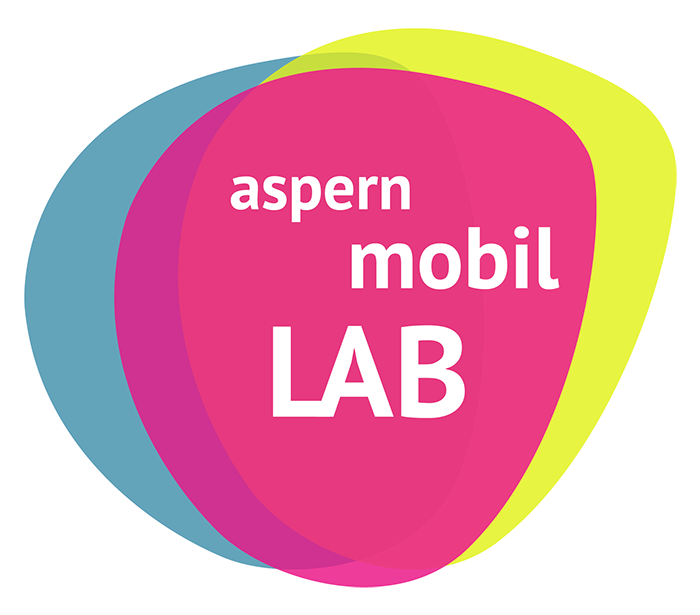Mobility Blog #1 | Park-and-Ride
For more info on the blog series and all other posts: https://www.mobillab.wien/tagebuch/
New infrastructure for yesterday’s mobility
I would like to begin by addressing a topic that is not exactly easy to assess and is also emotionally charged.
I am talking about car parks. Many parking spaces, mostly in the form of large multi-storey car parks or asphalt surfaces, often located next to railway stations in the suburbs and generally almost always ugly. It is the dependence of rural areas on the automobile, cast in concrete or asphalt, and testifies to the unimaginativeness of each individual federal state, and the transport associations. On the other hand, they induced many to switch to public transport. And the number is increasing every year; ÖBB alone builds 2,000 new parking spaces in park-and-ride facilities every year.
The initial situation
Park-and-ride is a good thing, people leave their cars at home and travel by public transport – whether to the district capital, the provincial capital or the very big capital: Vienna. Park-and-ride means that commuters can get to work in a relaxed way (provided the train is not overcrowded) without having to wait in traffic jams. This saves time and many emissions. It means that even people who don’t live close to the station can park their car and use the train. So it’s actually a good thing. So why did I start out so downbeat?
Well, that’s only the positive part of the story, which politicians are only too happy to emphasise. The negative side is unknown or deliberately ignored – because that’s where it gets complicated.
From a rational point of view, park-and-ride facilities are infrastructure for motorised private transport and are “necessary” because there is no qualitative alternative to the car. As is so often the case in life, park-and-ride does not fight the cause, but the symptoms.
The cause: the car, as a symbol of freedom, conquered the streets in the post-war period and has held them firmly in its grip ever since. To this day, other road users are subordinated. This fixation on the automobile has left symptoms: Spatial and transport planning feels stuck in the last millennium and induces car traffic due to urban sprawl and greenfield commercial developments. In order to make this sprawling settlement structure usable at all, the car is again needed.
The bogus solution
And because I own a car anyway in this example, I also use it to get to work – the state subsidises this with the commuter allowance. But now the politicians want to get me interested in public transport and introduce an attractive annual ticket. Now I take the short way to the station – even if it’s only a few kilometres, of course – by car. After all, a new park-and-ride facility has been built at the nearby station, and it’s free.
Park-and-ride thus succeeds in shifting commuters to public transport and has certainly saved many people from traffic jams and frustration in the last few years, but one should not start to see it as a panacea. In view of the climate targets and the necessary reduction of car traffic, the aim must be to be able to travel the famous last mile independently of one’s own car.
The alternatives
And this is exactly where the creativity in transport solutions is needed, which I miss so much. Building “park-and-ride” car parks and a bicycle stand next to the station and selling it as a mobility hub is possible, but ridiculous. No one will ever cycle to the station if the cycle path to the next village is also the main road.
Especially where there are no Vorarlberg conditions in terms of bus connections and intervals, there is a need for offers such as city buses, call buses, taxis, various sharing offers, secure bicycle parking facilities, etc., and that at every station. There are examples of functioning micro-public transport systems in rural and small town areas – be it the Gmoa buses in the Neusiedlersee communities of Purbach and Breitenbrunn, the Traunseetaxi, the Eisenstadt city bus, the Postbus Shuttle Mödling or the citizen taxis in Tyrol.
Gmoa bus:
https://www.burgenland.info/dc/detail/POI/gmoa-bus-breitenbrunn
Traunseetaxi:
https://traunsee-almtal.salzkammergut.at/anreise-nahverkehr/traunstein-taxi.html
City bus Eisenstadt:
https://www.stadtbuseisenstadt.at/index.php/stadtbus-eisenstadt-97.html#top
Postbus-Shuttle:
https://www.postbus.at/de/unsere-leistungen/postbus-shuttle/moedling
Tirol: citizen taxis & VVT Taxi
https://www.meinbezirk.at/reutte/c-lokales/2-doerfer-mit-ueber-100-taxifahrern_a804690
https://www.vvt.at/page.cfm?vpath=ueber-uns/unsere-leistungen/regiotax
But these regionally limited systems are a patchwork carpet, the political will is needed to bring about comprehensive changes. And yes, I think all this could be financed if the state would finally free itself from the shackles of the car industry and end the climate-damaging subsidies. Just think of the millions of euros spent on park-and-ride facilities – instead, the above-mentioned systems could probably be financed nationwide and would also create a lot of jobs.
My desire
To use the land that exists around railway stations in a condensed way for housing, offices and commerce instead of wasting it on dead parking space is a top priority. Even if it is difficult to draw parallels between the rural area and aspern Seestadt, this is precisely what has been taken into account here: in the immediate vicinity of the Seestadt and Aspern Nord stations, the development is denser, there are more high-rise buildings. This keeps distances short and promotes active mobility. And the fact that there are also quite a few collective garages here in Seestadt is not the fault of Seestadt – but of the surroundings. Because if there were only Seestädte with underground and train connections everywhere, there would hardly be any need for cars in this world.
The bottom line
Settlement structure and transport infrastructure have enormous steering effects. Let’s use them properly and build the infrastructure we need for the future!
What do you think? Send me an e-mail! jori.thaler@tuwien.ac.at







